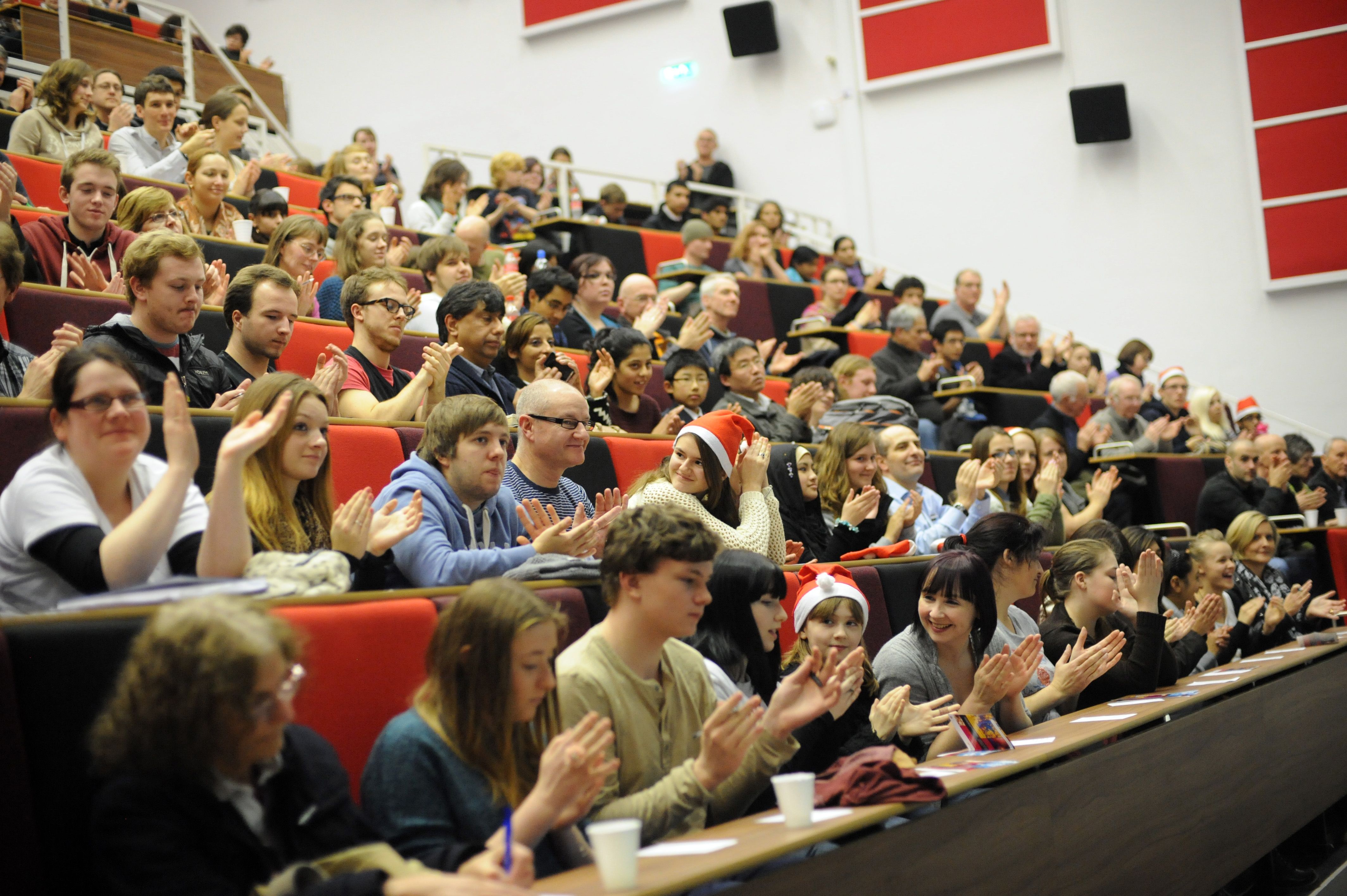Inspiring a new generation of scientists through Christmas lectures
The Royal Institution Christmas Lectures were set up in 1825 by Michael Faraday, one of the real greats of British science. With topics spanning all disciplines of science and mathematics, every year they enrapture the nation, and have become something of a Christmas tradition. Many famous scientists have taken part in the lectures over the 192 years that they have been running. Key names beyond Faraday himself are Robert Stawell Ball, William Henry Bragg, Carl Sagan, David Attenborough and Richard Dawkins, to name but a few.
The late Sir Christopher Zeeman, founder of the Warwick Maths department, gave the Christmas Lectures of 1978. This was the first set ever to be dedicated to Mathematics, being a digestible approach to Topology entitled ‘Mathematics into pictures’. Seated in the audience was a young Marcus du Sautoy (the Brian Cox of the maths world) who went on to present a set of mathematical Christmas lectures of his very own 28 years later. Pleasant symmetries such as this are perhaps at the heart of the Royal Institution’s mission – to reach out to children and young adults, expanding their minds and providing a source of inspiration in order to craft a new generation of scientists.
The late Sir Christopher Zeeman, founder of the Warwick Maths department, gave the Christmas Lectures of 1978…
In recent years, there has been a marked improvement for gender equality amongst the Royal Institution Christmas lecturers. Three of the last five years were presented by a woman, as opposed to only one in the five years preceding that. Professor Danielle George, who presented the 2014 lectures (‘Sparks will fly: How to Hack your Home’), stressed how “it’s so important to show young girls that there are women in science, engineering and tech. When I was at university, I’d go into a lecture and look left and right, searching for another woman. It was intimidating”. With British neuroscientist Professor Sophie Scott (UCL) at the helm this year, it can only help to encourage more young women into STEM subjects and continue to balance out the numbers.
This year’s Royal Institution Christmas Lectures all focussed on communication. The first of the three, ‘Say it with sound’, addressed communication through the form we are all probably most familiar – sound. Professor Scott looked at how our vocal chords make the noises responsible for us being the most versatile producer of sound on the planet. ‘Silent messages’ went on to explore methods found in nature of animals and plants communicating via pheromones, and the whole wealth of information that can be obtained from subconsciously reading each other’s body language. She also discussed micro-expressions, insuppressible movements of our faces that could be the key to telling what someone is really thinking. Her final lecture, ‘The Word’, delved into the complex world of linguistics, and how far the rest of the animal kingdom is from being able to achieve a similar level of communication. Beyond the words themselves, the effect that tone can have on what we say was explored, and she rounded off by investigating the effects that emojis can have in a modern age of electronic communication. All three lectures are on BBC iPlayer until near the end of January, so be sure to check them out, assuming you have a TV licence (!).
With British neuroscientist Professor Sophie Scott (UCL) at the helm this year, it can only help to encourage more young women into STEM subjects…
Acting with a similar overall ‘outreach’ goal in mind, the Warwick Arts centre held a similar lecture series over the festive period. Organised by Ally Caldecote from the physics outreach team and her team of Christmas elves, around 1500 people attended. Various STEM lecturers combined to put on a free show to local school children and interested members of the public, with the emphasis on making the lectures fun and relatable. By engaging local young adults with exciting but interactive science, such as explosions and liquid nitrogen, pitched at the appropriate level, the hope is that they will be encouraged to apply themselves more in school and eventually look to higher education.

Comments